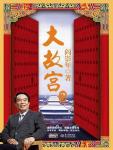Chapter 1 Lecture 21
Since the completion of the Qianqing Palace in the eighteenth year of Yongle (1420) in the Ming Dynasty, the name of the palace has not been changed and continues to this day.From the first day of the first lunar month in the 19th year of Yongle (1421), the Qianqing Palace was officially opened, to the 13th day of November in the 61st year of Kangxi (1722), when Emperor Kangxi Bintian, about 300 years, Ming and Qing Dynasties Sixteen emperors used Qianqing Palace as their main palace.From the sixty-first year of Emperor Kangxi (1722) of the Qing Dynasty, Emperor Yongzheng moved into the Hall of Mental Cultivation to govern and live in the Hall of Mental Cultivation, to the third year of Xuantong on December 25 (February 12, 1912), when Emperor Xuantong abdicated. It was about two hundred years, although the eight emperors Yongzheng, Qianlong, Jiaqing, Daoguang, Xianfeng, Tongzhi, Guangxu and Xuantong moved He went to Yangxin Palace to govern and live, but the status of Qianqing Palace as the emperor's main palace has not changed.

Because of the storage of the secret storage box of Emperor Yongzheng, "Fair and Bright" has become the most mysterious plaque in the Forbidden City
Everyone went to the Forbidden City to visit the Qianqing Palace. There is a throne in the middle. When you look up, you will see the plaque of "Upright and Bright", which is written by Emperor Shunzhi. (Volume 12 of "Guochao Palace History") The upside-down column on the throne is Emperor Kangxi's imperial calligraphy couplet: Ke Kuan Keren, the emperor built it with extremes;The main meaning is: being lenient and benevolent to the emperor, the society will last forever;The front couplet said: To show the righteousness of all nations, to be cautious about one's body and to cultivate thoughts forever;
As for the "upright and bright" plaque in the Qianqing Palace, I checked, and the word "upright and bright" is not found in the "Thirteen Classics", nor in the pre-Qin classics. The origin of the word "Zhengda Guangming": the word "Zhengda" is found in "Yi·Zhuang·彖", and the word "Guangming" is recorded in "Yi·Lu·彖". fair and square" term.Here I explain that "彖" (sound tuan) is a word in "Book of Changes" that summarizes the basic connotation of a hexagram. "Zhengda" in "Yi·Zhuang·彖" and "Guangming" in "Yi·Lu·彖" are combined into "Zhengda Guangming", which means to be a person and do things, be an official and a government, study and do business, and cultivate oneself. Heart, must be "fair and bright". "Fair and bright" is a common concept and vision of the traditional culture of the Chinese nation.Of course, in the monarchy era, it is impossible for the monarch to be "fair and bright" with the outside and the inside, but it is both wise and advisable to use "fair and bright" as the "motto" of philosophy and politics, morality and practice.
There was no "upright and bright" plaque in the Qianqing Palace in the Ming Dynasty.The "Upright and Bright" plaque in Qianqing Palace was inscribed by Emperor Shunzhi of the Qing Dynasty.Emperor Shunzhi had distinct cultural characteristics: his father, Huang Taiji, grew up in the forest culture of Manchuria in the northeast, and his mother, Empress Dowager Xiaozhuang, grew up in the grassland culture of Northwest Mongolia. The farming culture of the Han nationality in the Central Plains.Therefore, the concept of "upright and bright" is a manifestation of the fusion of Manchurian forest culture, Mongolian grassland culture and Central Plains farming culture.As far as Emperor Shunzhi's son, Emperor Kangxi, his father was Manchurian, his mother was Han, and his grandmother was Mongolian, Emperor Kangxi was a master of the fusion of forest culture, grassland culture, and farming culture.The "Upright and Bright" plaque inscribed by Emperor Shunzhi and valued by Emperor Kangxi shows that "Upright and Bright" should be the principle of common knowledge and action of philosophy and politics, morality and law.
The reason why the "upright and bright" plaque has attracted widespread attention from the society is that Emperor Yongzheng put the secret storage (jue) box (also known as the secret storage box) behind the plaque.This is something that Emperor Shunzhi did not expect when he set up the "fair and bright" plaque. Behind the "Fair and Bright" plaque is a secret storage box, leaving behind many historical stories.

Because of the storage of the secret storage box of Emperor Yongzheng, "Fair and Bright" has become the most mysterious plaque in the Forbidden City

